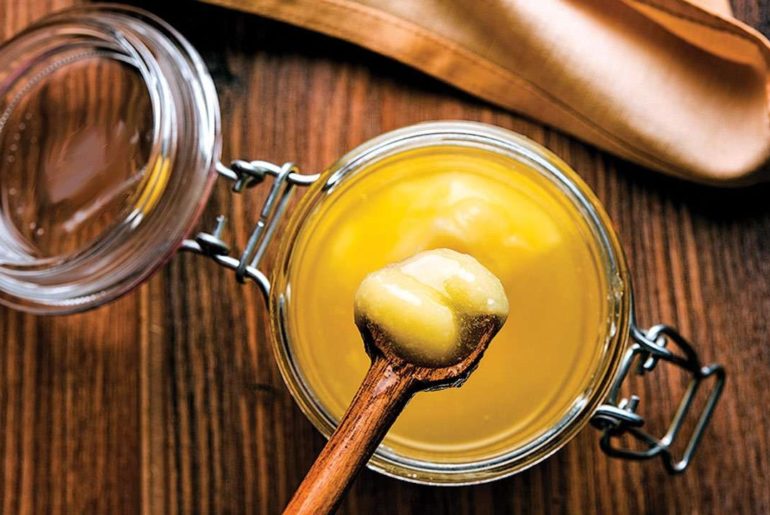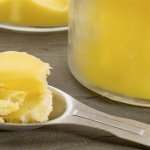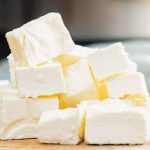Ghee also is known as clarified butter is a regular and effective ingredient in the India Kitchen. It is made up of pure and fresh cow milk. Before vegetable oil came into being, food was primarily cooked in ghee.
According to Ayurveda, ghee is an important ingredient used for Ayurvedic medicines as it helps in growth. Ghee also promotes intellect, is good for bone health and digestion of food. It has an abundance of saturated fatty acids that are easy to digest. Apart from these benefits, let’s look at some other benefits of pure organic cow ghee.
Benefits of Fresh Cow Ghee
- Ghee is rich in oil-soluble vitamin A & E, K2
etc . - Ghee is ideal for various cooking such as sweets, halwa, deep-frying, baking, etc.
- Ghee provides nutrition by detoxifies the whole body.
- Ghee contains Omega 3, 6 and 9 fatty acids which are good for the functioning of the heart and brain.
- Ghee contains 62% of saturated fats.
- Ghee increase body resistance to various infections.
We have seen the benefits of cow ghee but the question arises that is the Cow Ghee which we consume is pure and fresh. Whether there is any method to check the purity of cow ghee.
Finding good quality ghee can often be a task as adulterated cow ghee is widely available in the market.
If you are ever unsure about the quality of ghee, here are some easy tests to do at home.
Test that can be done home to check the purity of Organic and Pure Cow Ghee:
Several tests can be done at home to test the purity of pure ghee. Some of these areas follow:
- Heat Test: One of the simplest methods you can use to find impurity of ghee is by heating a teaspoon of ghee in a vessel. If ghee melts immediately and turns dark brownish, then it is pure ghee. If it takes time to melt and turns into yellow, then it is adulterated.
- Palm test: Take a teaspoon of ghee at
palm and if ghee melts in your palm by itself, then it is pure. Pure ghee melts onthe body temperature. - Double-boiler method check: To check if the ghee contains traces of coconut oil, melt the ghee in a glass jar using a double boiler method and pour into the glass jar, put the jar in the fridge for some time. If ghee and coconut oil solidify in a separate layer, then ghee is adulterated else ghee is pure.
- Check of vegetable oil: Take a teaspoon of melted ghee in a transparent bottle. Add a pinch of sugar, close the container and shake it. Let it stand for five minutes. If a red color appears at bottom of vessels, then ghee contains vegetable oil.
- Check of Starch in ghee: Add a few drops of iodine to teaspoons of molten ghee. If it turns into purple that means ghee contains starch (mashed potato).
- HCI test: Heat a tablespoon of ghee in a test tube, and add an equal amount of concentrated HCI (the acid that the stomach uses to digest food) with a pinch of sugar. Shake well and wait for five minutes. The appearance of pink or red color in the lower layer shows the sample is adulterated with rancid ghee like vanaspati ghee.
So by performing these simple tests at home, you can easily find that the ghee you purchased is adulterated or not. These adulterants have dangerous effects on health so please aware of the ghee you are consuming as it is an important part of our diet.
We at Puresh Daily, create confidence for our consumers that our ghee does not have any adulteration above mentioned.
We provide you organic and pure cow ghee at your doorstep.
We at Puresh Daily, www.pureshmilk.com are on a mission of #MakingRanchiHealthier.


